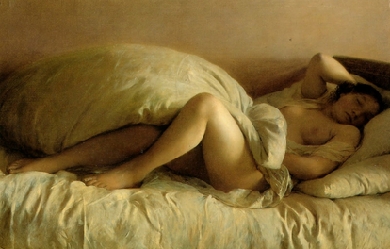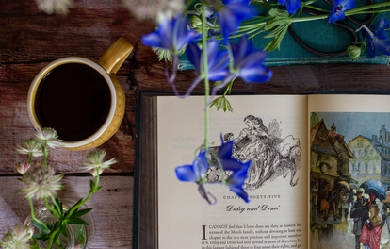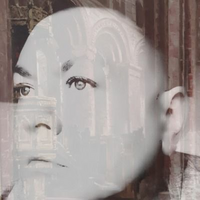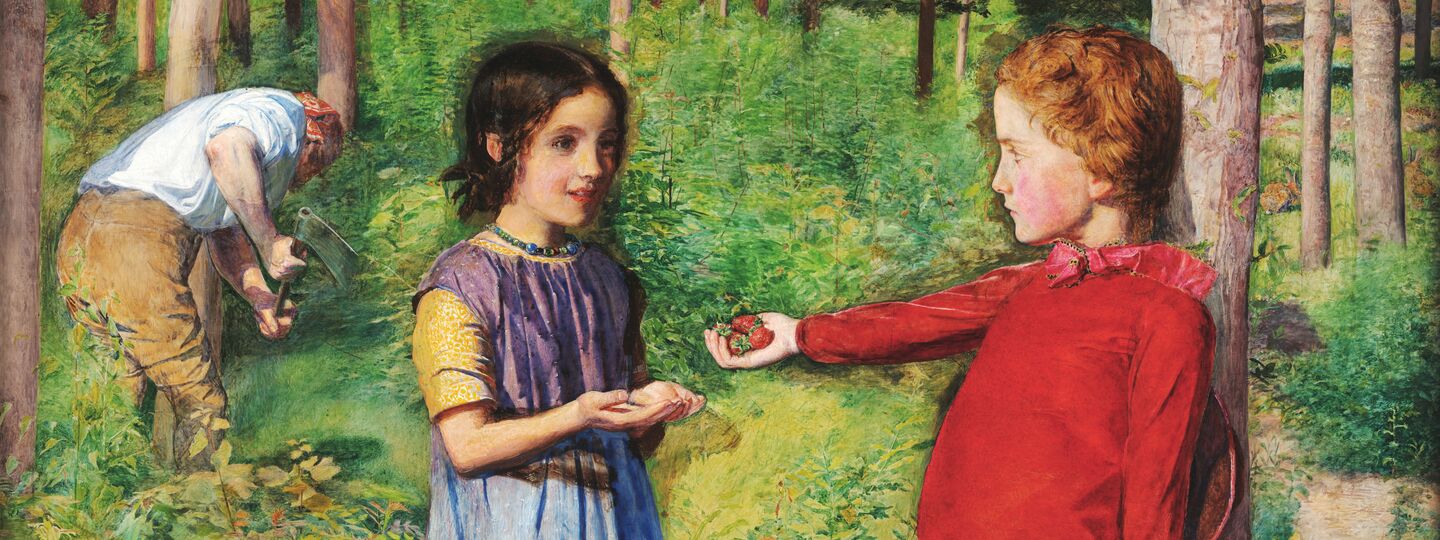
Info
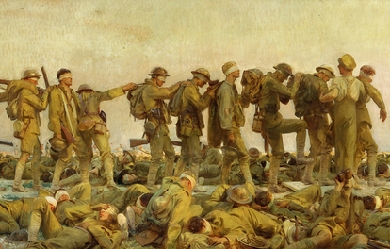
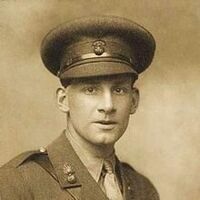
Siegfried Loraine Sassoon (8 September 1886 – 1 September 1967) was an English poet, author and soldier. Decorated for bravery on the Western Front, he became one of the leading poets of the First World War. His poetry both described the horrors of the trenches, and satirised the patriotic pretensions of those who, in Sassoon's view, were responsible for a vainglorious war. He later won acclaim for his prose work, notably his three-volume fictionalised autobiography, collectively known as the "Sherston Trilogy". Motivated by patriotism, Sassoon joined the British Army just as the threat of World War I was realised, and was in service with the Sussex Yeomanry on the day the United Kingdom declared war (4 August 1914). He broke his arm badly in a riding accident and was put out of action before even leaving England, spending the spring of 1915 convalescing.
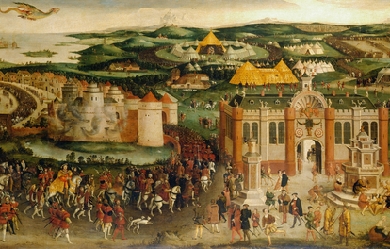
Edmund Spenser (c. 1552 – 13 January 1599) was an English poet best known for The Faerie Queene, an epic poem and fantastical allegory celebrating the Tudor dynasty and Elizabeth I. He is recognised as one of the premier craftsmen of Modern English verse in its infancy, and is considered one of the greatest poets in the English language. Edmund Spenser was born in East Smithfield, London, around the year 1552, though there is some ambiguity as to the exact date of his birth. As a young boy, he was educated in London at the Merchant Taylors' School and matriculated as a sizar at Pembroke College, Cambridge. While at Cambridge he became a friend of Gabriel Harvey and later consulted him, despite their differing views on poetry. In 1578 he became for a short time secretary to John Young, Bishop of Rochester. In 1579 he published The Shepheardes Calender and around the same time married his first wife, Machabyas Childe. In July 1580 Spenser went to Ireland in service of the newly appointed Lord Deputy, Arthur Grey, 14th Baron Grey de Wilton. When Grey was recalled to England, he stayed on in Ireland, having acquired other official posts and lands in the Munster Plantation. At some time between 1587 and 1589 he acquired his main estate at Kilcolman, near Doneraile in North Cork. Among his acquaintances in the area was Walter Raleigh, a fellow colonist. He later bought a second holding to the south, at Rennie, on a rock overlooking the river Blackwater in North Cork. Its ruins are still visible today. A short distance away grew a tree, locally known as "Spenser's Oak" until it was destroyed in a lightning strike in the 1960s. Local legend has it that he penned some of The Faerie Queene under this tree. In 1590 Spenser brought out the first three books of his most famous work, The Faerie Queene, having travelled to London to publish and promote the work, with the likely assistance of Raleigh. He was successful enough to obtain a life pension of £50 a year from the Queen. He probably hoped to secure a place at court through his poetry, but his next significant publication boldly antagonised the queen's principal secretary, Lord Burghley, through its inclusion of the satirical Mother Hubberd's Tale. He returned to Ireland. By 1594 Spenser's first wife had died, and in that year he married Elizabeth Boyle, to whom he addressed the sonnet sequence Amoretti. The marriage itself was celebrated in Epithalamion. In 1596 Spenser wrote a prose pamphlet titled, A View of the Present State of Ireland. This piece, in the form of a dialogue, circulated in manuscript, remaining unpublished until the mid-seventeenth century. It is probable that it was kept out of print during the author's lifetime because of its inflammatory content. The pamphlet argued that Ireland would never be totally 'pacified' by the English until its indigenous language and customs had been destroyed, if necessary by violence. Later on, during the Nine Years War in 1598, Spenser was driven from his home by the native Irish forces of Aodh Ó Néill. His castle at Kilcolman was burned, and Ben Jonson (who may have had private information) asserted that one of his infant children died in the blaze. In the year after being driven from his home, Spenser travelled to London, where he died aged forty-six. His coffin was carried to his grave in Westminster Abbey by other poets, who threw many pens and pieces of poetry into his grave with many tears. His second wife survived him and remarried twice. Rhyme and reason Thomas Fuller included in his Worthies of England a story that The Queen told her treasurer, William Cecil, to pay Spenser one hundred pounds for his poetry. The treasurer, however, objected that the sum was too much. She said, "Then give him what is reason". After a long while without receiving his payment, Spenser gave the Queen this quatrain on one of her progresses: I was promis'd on a time, To have a reason for my rhyme: From that time unto this season, I receiv'd nor rhyme nor reason. She immediately ordered the treasurer pay Spenser the original £100. This story seems to have attached itself to Spenser from Thomas Churchyard, who apparently had difficulty in getting payment of his pension (the only other one Elizabeth awarded to a poet). Spenser seems to have had no difficulty in receiving payment when it was due, the pension being collected for him by his publisher, Ponsonby. The Faerie Queene Spenser's masterpiece is the epic poem The Faerie Queene. The first three books of The Faerie Queene were published in 1590, and a second set of three books were published in 1596. Spenser originally indicated that he intended the poem to consist of twelve books, so the version of the poem we have today is incomplete. Despite this, it remains one of the longest poems in the English language. It is an allegorical work, and can be read (as Spenser presumably intended) on several levels of allegory, including as praise of Queen Elizabeth I. In a completely allegorical context, the poem follows several knights in an examination of several virtues. In Spenser's "A Letter of the Authors," he states that the entire epic poem is "cloudily enwrapped in allegorical devises," and that the aim behind The Faerie Queene was to “fashion a gentleman or noble person in virtuous and gentle discipline.” Shorter poems Spenser published numerous relatively short poems in the last decade of the sixteenth century, almost all of which consider love or sorrow. In 1591 he published Complaints, a collection of poems that express complaints in mournful or mocking tones. Four years later, in 1595, Spenser published Amoretti and Epithalamion. This volume contains eighty-nine sonnets commemorating his courtship of Elizabeth Boyle. In “Amoretti,” Spenser uses subtle humour and parody while praising his beloved, reworking Petrarchism in his treatment of longing for a woman. “Epithalamion,” similar to “Amoretti,” deals in part with the unease in the development of a romantic and sexual relationship. It was written for his wedding to his young bride, Elizabeth Boyle. The poem consists of 365 long lines, corresponding to the days of the year; 68 short lines, claimed to represent the sum of the 52 weeks, 12 months, and 4 seasons of the annual cycle; and 24 stanzas, corresponding to the diurnal and sidereal hours.[citation needed] Some have speculated that the attention to disquiet in general reflects Spenser’s personal anxieties at the time, as he was unable to complete his most significant work, The Faerie Queene. In the following year Spenser released "Prothalamion," a wedding song written for the daughters of a duke, allegedly in hopes to gain favor in the court. The Spenserian stanza and sonnet Spenser used a distinctive verse form, called the Spenserian stanza, in several works, including The Faerie Queene. The stanza's main meter is iambic pentameter with a final line in iambic hexameter (having six feet or stresses, known as an Alexandrine), and the rhyme scheme is ababbcbcc. He also used his own rhyme scheme for the sonnet. Influences and influenced Though Spenser was well read in classical literature, scholars have noted that his poetry does not rehash tradition, but rather is distinctly his. This individuality may have resulted, to some extent, from a lack of comprehension of the classics. Spenser strove to emulate such ancient Roman poets as Virgil and Ovid, whom he studied during his schooling, but many of his best-known works are notably divergent from those of his predecessors.[15] The language of his poetry is purposely archaic, reminiscent of earlier works such as The Canterbury Tales of Geoffrey Chaucer and Il Canzoniere of Francesco Petrarca, whom Spenser greatly admired. Spenser was called a Poets' Poet and was admired by William Wordsworth, John Keats, Lord Byron, and Alfred Lord Tennyson, among others. Walter Raleigh wrote a dedicatory sonnet to The Faerie Queene in 1590, in which he claims to admire and value Spenser’s work more so than any other in the English language. In the eighteenth century, Alexander Pope compared Spenser to “a mistress, whose faults we see, but love her with them all." A View of the Present State of Ireland n his work A View of the present State of Ireland, Spenser devises his ideas to the issues of the nation of Ireland. These views are suspected to not be his own but based on the work of his predecessor, Lord Arthur Grey de Wilton who was appointed Lord Deputy of Ireland in 1580 (Henley 19, 168-69). Lord Grey was a major figure in Ireland at the time and Spenser was influenced greatly by his ideals and his work in the country, as well as that of his fellow countrymen also living in Ireland at the time (Henley 169). The goal of this piece was to show that Ireland was in great need of reform. Spenser believed that “Ireland is a diseased portion of the State, it must first be cured and reformed, before it could be in a position to appreciate the good sound laws and blessings of the nation” (Henley 178). In A View of the present State of Ireland, Spenser categorizes the “evils” of the Irish people into three prominent categories: laws, customs, and religion (Spenser). These three elements work together in creating the disruptive and degraded people. One example given in the work is the native law system called “Brehon Law” which trumps the established law given by the English monarchy (Spenser). This system has its own court and way of dealing with infractions. It has been passed down through the generations and Spenser views this system as a native backward custom which must be destroyed. Spenser also recommended scorched earth tactics, such as he had seen used in the Desmond Rebellions, to create famine. Although it has been highly regarded as a polemical piece of prose and valued as a historical source on 16th century Ireland, the View is seen today as genocidal in intent. Spenser did express some praise for the Gaelic poetic tradition, but also used much tendentious and bogus analysis to demonstrate that the Irish were descended from barbarian Scythian stock. References Wikipedia - http://en.wikipedia.org/wiki/Edmund_Spenser

These are writings from the inner workings of a mind in constant thought about LIFE and everything it entails for the purpose of self-transcendence and with the intention to bring more understanding and healing to my own life and possibly those of others. My journey is one of self-exploration and discovery. Since my beliefs lie on the premise that we are so strongly connected to everything in existence, in getting to know myself I am getting to know the world. Learning about the world teaches me about myself. I find freedom in understanding and expression. My one true love is the paradox of questioning existence.

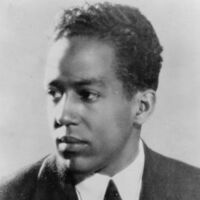
James Mercer Langston Hughes (February 1, 1902 – May 22, 1967) was an American poet, social activist, novelist, playwright, and columnist. He was one of the earliest innovators of the then-new literary art form jazz poetry. Hughes is best known for his work during the Harlem Renaissance. He famously wrote about the period that “the negro was in vogue” which was later paraphrased as “when Harlem was in vogue”.
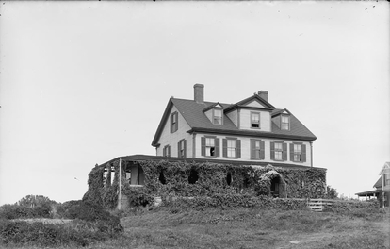
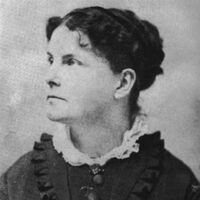
Celia Laighton Thaxter (June 29, 1835 – August 25, 1894) was an American writer of poetry and stories. She was born in Portsmouth, New Hampshire. Thaxter grew up in the Isles of Shoals, first on White Island, where her father, Thomas Laighton, was a lighthouse keeper, and then on Smuttynose and Appledore Islands. When she was sixteen, she married Levi Thaxter and moved to the mainland, residing first in Watertown, Massachusetts at a property his father owned. Celia died suddenly while on Appledore Island. She was buried not far from her cottage, which unfortunately burned in the 1914 fire that destroyed The Appledore House hotel.
_and_brother_Ronald_-_Google_Art_Project.jpg)
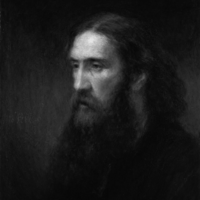
George MacDonald (10 December 1824– 18 September 1905) was a Scottish author, poet, and Christian minister. He was a pioneering figure in the field of fantasy literature and the mentor of fellow writer Lewis Carroll. His writings have been cited as a major literary influence by many notable authors including W. H. Auden, C. S. Lewis, J. R. R. Tolkien, Walter de la Mare, E. Nesbit and Madeleine L’Engle. C. S. Lewis wrote that he regarded MacDonald as his “master”: “Picking up a copy of Phantastes one day at a train-station bookstall, I began to read. A few hours later,” said Lewis, “I knew that I had crossed a great frontier.” G. K. Chesterton cited The Princess and the Goblin as a book that had “made a difference to my whole existence”. Elizabeth Yates wrote of Sir Gibbie, “It moved me the way books did when, as a child, the great gates of literature began to open and first encounters with noble thoughts and utterances were unspeakably thrilling.” Even Mark Twain, who initially disliked MacDonald, became friends with him, and there is some evidence that Twain was influenced by MacDonald. Christian author Oswald Chambers (1874–1917) wrote in Christian Disciplines, vol. 1, (pub. 1934) that “it is a striking indication of the trend and shallowness of the modern reading public that George MacDonald’s books have been so neglected”. In addition to his fairy tales, MacDonald wrote several works on Christian apologetics including several that defended his view of Christian Universalism. Early life George MacDonald was born on 10 December 1824 at Huntly, Aberdeenshire, Scotland. His father, a farmer, was one of the MacDonalds of Glen Coe, and a direct descendant of one of the families that suffered in the massacre of 1692. The Doric dialect of the Aberdeenshire area appears in the dialogue of some of his non-fantasy novels. MacDonald grew up in the Congregational Church, with an atmosphere of Calvinism. But MacDonald never felt comfortable with some aspects of Calvinist doctrine; indeed, legend has itt that when the doctrine of predestination was first explained to him, he burst into tears (although assured that he was one of the elect). Later novels, such as Robert Falconer and Lilith, show a distaste for the idea that God’s electing love is limited to some and denied to others. MacDonald graduated from the University of Aberdeen, and then went to London, studying at Highbury College for the Congregational ministry. In 1850 he was appointed pastor of Trinity Congregational Church, Arundel, but his sermons (preaching God’s universal love and the possibility that none would, ultimately, fail to unite with God) met with little favour and his salary was cut in half. Later he was engaged in ministerial work in Manchester. He left that because of poor health, and after a short sojourn in Algiers he settled in London and taught for some time at the University of London. MacDonald was also for a time editor of Good Words for the Young, and lectured successfully in the United States during 1872–1873. Work George MacDonald’s best-known works are Phantastes, The Princess and the Goblin, At the Back of the North Wind, and Lilith, all fantasy novels, and fairy tales such as “The Light Princess”, “The Golden Key”, and “The Wise Woman”. “I write, not for children,” he wrote, “but for the child-like, whether they be of five, or fifty, or seventy-five.” MacDonald also published some volumes of sermons, the pulpit not having proved an unreservedly successful venue. MacDonald also served as a mentor to Lewis Carroll (the pen-name of Rev. Charles Lutwidge Dodgson); it was MacDonald’s advice, and the enthusiastic reception of Alice by MacDonald’s many sons and daughters, that convinced Carroll to submit Alice for publication. Carroll, one of the finest Victorian photographers, also created photographic portraits of several of the MacDonald children. MacDonald was also friends with John Ruskin and served as a go-between in Ruskin’s long courtship with Rose La Touche. MacDonald was acquainted with most of the literary luminaries of the day; a surviving group photograph shows him with Tennyson, Dickens, Wilkie Collins, Trollope, Ruskin, Lewes, and Thackeray. While in America he was a friend of Longfellow and Walt Whitman. In 1877 he was given a civil list pension. From 1879 he and his family moved to Bordighera in a place much loved by British expatriates, the Riviera dei Fiori in Liguria, Italy, almost on the French border. In that locality there also was an Anglican Church, which he attended. Deeply enamoured of the Riviera, he spent there 20 years, writing almost half of his whole literary production, especially the fantasy work. In that Ligurian town MacDonald founded a literary studio named Casa Coraggio (Bravery House), which soon became one of the most renowned cultural centres of that period, well attended by British and Italian travellers, and by locals. In that house representations were often held of classic plays, and readings were given of Dante and Shakespeare. In 1900 he moved into St George’s Wood, Haslemere, a house designed for him by his son, Robert Falconer MacDonald, and the building overseen by his eldest son, Greville MacDonald. He died on 18 September 1905 in Ashtead, (Surrey). He was cremated and his ashes buried in Bordighera, in the English cemetery, along with his wife Louisa and daughters Lilia and Grace. As hinted above, MacDonald’s use of fantasy as a literary medium for exploring the human condition greatly influenced a generation of such notable authors as C. S. Lewis (who featured him as a character in his The Great Divorce), J. R. R. Tolkien, and Madeleine L’Engle. MacDonald’s non-fantasy novels, such as Alec Forbes, had their influence as well; they were among the first realistic Scottish novels, and as such MacDonald has been credited with founding the “kailyard school” of Scottish writing. His son Greville MacDonald became a noted medical specialist, a pioneer of the Peasant Arts movement, and also wrote numerous fairy tales for children. Greville ensured that new editions of his father’s works were published. Another son, Ronald MacDonald, was also a novelist. Ronald’s son, Philip MacDonald, (George MacDonald’s grandson) became a very well known Hollywood screenwriter. Theology MacDonald rejected the doctrine of penal substitutionary atonement as developed by John Calvin, which argues that Christ has taken the place of sinners and is punished by the wrath of God in their place, believing that in turn it raised serious questions about the character and nature of God. Instead, he taught that Christ had come to save people from their sins, and not from a Divine penalty for their sins. The problem was not the need to appease a wrathful God but the disease of cosmic evil itself. George MacDonald frequently described the Atonement in terms similar to the Christus Victor theory. MacDonald posed the rhetorical question, “Did he not foil and slay evil by letting all the waves and billows of its horrid sea break upon him, go over him, and die without rebound—spend their rage, fall defeated, and cease? Verily, he made atonement!” MacDonald was convinced that God does not punish except to amend, and that the sole end of His greatest anger is the amelioration of the guilty. As the doctor uses fire and steel in certain deep-seated diseases, so God may use hell-fire if necessary to heal the hardened sinner. MacDonald declared, “I believe that no hell will be lacking which would help the just mercy of God to redeem his children.” MacDonald posed the rhetorical question, “When we say that God is Love, do we teach men that their fear of Him is groundless?” He replied, “No. As much as they fear will come upon them, possibly far more.... The wrath will consume what they call themselves; so that the selves God made shall appear.” However, true repentance, in the sense of freely chosen moral growth, is essential to this process, and, in MacDonald’s optimistic view, inevitable for all beings (see universal reconciliation). He recognised the theoretical possibility that, bathed in the eschatological divine light, some might perceive right and wrong for what they are but still refuse to be transfigured by operation of God’s fires of love, but he did not think this likely. In this theology of divine punishment, MacDonald stands in opposition to Augustine of Hippo, and in agreement with the Greek Church Fathers Clement of Alexandria, Origen, and St. Gregory of Nyssa, although it is unknown whether MacDonald had a working familiarity with Patristics or Eastern Orthodox Christianity. At least an indirect influence is likely, because F. D. Maurice, who influenced MacDonald, knew the Greek Fathers, especially Clement, very well. MacDonald states his theological views most distinctly in the sermon Justice found in the third volume of Unspoken Sermons. In his introduction to George MacDonald: An Anthology, C. S. Lewis speaks highly of MacDonald’s theology: “This collection, as I have said, was designed not to revive MacDonald’s literary reputation but to spread his religious teaching. Hence most of my extracts are taken from the three volumes of Unspoken Sermons. My own debt to this book is almost as great as one man can owe to another: and nearly all serious inquirers to whom I have introduced it acknowledge that it has given them great help—sometimes indispensable help toward the very acceptance of the Christian faith. ... I know hardly any other writer who seems to be closer, or more continually close, to the Spirit of Christ Himself. Hence his Christ-like union of tenderness and severity. Nowhere else outside the New Testament have I found terror and comfort so intertwined.... In making this collection I was discharging a debt of justice. I have never concealed the fact that I regarded him as my master; indeed I fancy I have never written a book in which I did not quote from him. But it has not seemed to me that those who have received my books kindly take even now sufficient notice of the affiliation. Honesty drives me to emphasize it.” Bibliography Fantasy * Phantastes: A Fairie Romance for Men and Women (1858) * “Cross Purposes” (1862) * Adela Cathcart (1864), containing “The Light Princess”, “The Shadows”, and other short stories * The Portent: A Story of the Inner Vision of the Highlanders, Commonly Called “The Second Sight” (1864) * Dealings with the Fairies (1867), containing “The Golden Key”, “The Light Princess”, “The Shadows”, and other short stories * At the Back of the North Wind (1871) * Works of Fancy and Imagination (1871), including Within and Without, “Cross Purposes”, “The Light Princess”, “The Golden Key”, and other works * The Princess and the Goblin (1872) * The Wise Woman: A Parable (1875) (Published also as “The Lost Princess: A Double Story”; or as “A Double Story”.) * The Gifts of the Child Christ and Other Tales (1882; republished as Stephen Archer and Other Tales) * The Day Boy and the Night Girl (1882) * The Princess and Curdie (1883), a sequel to The Princess and the Goblin * The Flight of the Shadow (1891) * Lilith: A Romance (1895) Realistic fiction * David Elginbrod (1863; republished as The Tutor’s First Love), originally published in three volumes * Alec Forbes of Howglen (1865; republished as The Maiden’s Bequest) * Annals of a Quiet Neighbourhood (1867) * Guild Court: A London Story (1868) * Robert Falconer (1868; republished as The Musician’s Quest) * The Seaboard Parish (1869), a sequel to Annals of a Quiet Neighbourhood * Ranald Bannerman’s Boyhood (1871) * Wilfrid Cumbermede (1871–72) * The Vicar’s Daughter (1871–72), a sequel to Annals of a Quiet Neighborhood and The Seaboard Parish * The History of Gutta Percha Willie, the Working Genius (1873), usually called simply Gutta Percha Willie * Malcolm (1875) * St. George and St. Michael (1876) * Thomas Wingfold, Curate (1876; republished as The Curate’s Awakening) * The Marquis of Lossie (1877; republished as The Marquis’ Secret), the second book of Malcolm * Paul Faber, Surgeon (1879; republished as The Lady’s Confession), a sequel to Thomas Wingfold, Curate * Sir Gibbie (1879; republished as The Baronet’s Song) * Mary Marston (1881; republished as A Daughter’s Devotion) * Warlock o’ Glenwarlock (1881; republished as Castle Warlock and The Laird’s Inheritance) * Weighed and Wanting (1882; republished as A Gentlewoman’s Choice) * Donal Grant (1883; republished as The Shepherd’s Castle), a sequel to Sir Gibbie * What’s Mine’s Mine (1886; republished as The Highlander’s Last Song) * Home Again: A Tale (1887; republished as The Poet’s Homecoming) * The Elect Lady (1888; republished as The Landlady’s Master) * A Rough Shaking (1891) * There and Back (1891; republished as The Baron’s Apprenticeship), a sequel to Thomas Wingfold, Curate and Paul Faber, Surgeon * Heather and Snow (1893; republished as The Peasant Girl’s Dream) * Salted with Fire (1896; republished as The Minister’s Restoration) * Far Above Rubies (1898) Poetry * Twelve of the Spiritual Songs of Novalis (1851), privately printed translation of the poetry of Novalis * Within and Without: A Dramatic Poem (1855) * Poems (1857) * “A Hidden Life” and Other Poems (1864) * “The Disciple” and Other Poems (1867) * Exotics: A Translation of the Spiritual Songs of Novalis, the Hymn-book of Luther, and Other Poems from the German and Italian (1876) * Dramatic and Miscellaneous Poems (1876) * Diary of an Old Soul (1880) * A Book of Strife, in the Form of the Diary of an Old Soul (1880), privately printed * The Threefold Cord: Poems by Three Friends (1883), privately printed, with Greville Matheson and John Hill MacDonald * Poems (1887) * The Poetical Works of George MacDonald, 2 Volumes (1893) * Scotch Songs and Ballads (1893) * Rampolli: Growths from a Long-planted Root (1897) Nonfiction * Unspoken Sermons (1867) * England’s Antiphon (1868, 1874) * The Miracles of Our Lord (1870) * Cheerful Words from the Writing of George MacDonald (1880), compiled by E. E. Brown * Orts: Chiefly Papers on the Imagination, and on Shakespeare (1882) * “Preface” (1884) to Letters from Hell (1866) by Valdemar Adolph Thisted * The Tragedie of Hamlet, Prince of Denmarke: A Study With the Test of the Folio of 1623 (1885) * Unspoken Sermons, Second Series (1885) * Unspoken Sermons, Third Series (1889) * A Cabinet of Gems, Cut and Polished by Sir Philip Sidney; Now, for the More Radiance, Presented Without Their Setting by George MacDonald (1891) * The Hope of the Gospel (1892) * A Dish of Orts (1893) * Beautiful Thoughts from George MacDonald (1894), compiled by Elizabeth Dougall In popular culture * (Alphabetical by artist) * Christian celtic punk band Ballydowse have a song called “George MacDonald” on their album Out of the Fertile Crescent. The song is both taken from MacDonald’s poem “My Two Geniuses” and liberally quoted from Phantastes. * American classical composer John Craton has utilized several of MacDonald’s stories in his works, including “The Gray Wolf” (in a tone poem of the same name for solo mandolin– 2006) and portions of “The Cruel Painter”, Lilith, and The Light Princess (in Three Tableaux from George MacDonald for mandolin, recorder, and cello– 2011). * Contemporary new-age musician Jeff Johnson wrote a song titled “The Golden Key” based on George MacDonald’s story of the same name. He has also written several other songs inspired by MacDonald and the Inklings. * Jazz pianist and recording artist Ray Lyon has a song on his CD Beginning to See (2007), called “Up The Spiral Stairs”, which features lyrics from MacDonald’s 26 and 27 September devotional readings from the book Diary of an Old Soul. * A verse from The Light Princess is cited in the “Beauty and the Beast” song by Nightwish. * Rock group The Waterboys titled their album Room to Roam (1990) after a passage in MacDonald’s Phantastes, also found in Lilith. The title track of the album comprises a MacDonald poem from the text of Phantastes set to music by the band. The novels Lilith and Phantastes are both named as books in a library, in the title track of another Waterboys album, Universal Hall (2003). (The Waterboys have also quoted from C. S. Lewis in several songs, including “Church Not Made With Hands” and “Further Up, Further In”, confirming the enduring link in modern pop culture between MacDonald and Lewis.) References Wikipedia—https://en.wikipedia.org/wiki/George_MacDonald

I write poetry. It's my entire life, pretty much. Part of me wants to delete all of this, because most of it is childish and stupid. There is a part of me though that kinda wants to hang on to some of it cause it's part of my history. I no longer have physical copies of any of these, and if I delete it without copying it it'll just be gone. No editing; no rewrites; no revisions. Just gone. Never to return again. What should I do?
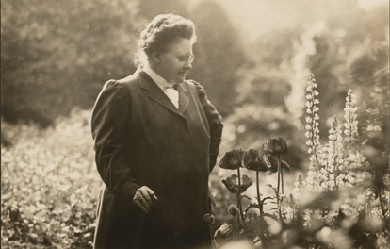
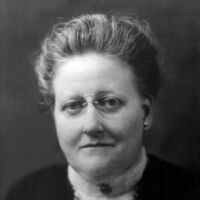
Amy Lawrence Lowell (February 9, 1874 – May 12, 1925) was an American poet of the imagist school from Brookline, Massachusetts, who posthumously won the Pulitzer Prize for Poetry in 1926. Amy was born into Brookline’s Lowell family, sister to astronomer Percival Lowell and Harvard president Abbott Lawrence Lowell. She never attended college because her family did not consider it proper for a woman to do so. She compensated for this lack with avid reading and near-obsessive book collecting. She lived as a socialite and travelled widely, turning to poetry in 1902 (age 28) after being inspired by a performance of Eleonora Duse in Europe.
Environmental scientist and maybe a poet. I suspect like most people on here I have an urge to write. I've been much buoyed by kind words and likes over the years on this site, despite been in the weeds and not writing for the past few. Now I have my head above the water I can hear my muse again. Thank you kindly for stopping by. I love reading work by others at all stages of their writing journey. Bon Voyage!
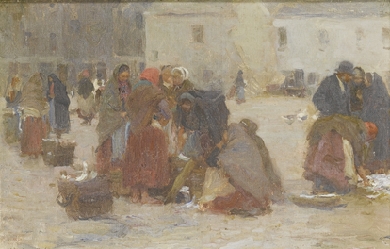
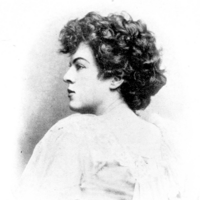
Dora Maria Sigerson Shorter (16 August 1866– 6 January 1918) was an Irish poet and sculptor, who after her marriage in 1895 wrote under the name Dora Sigerson Shorter. She was born in Dublin, Ireland, the daughter of George Sigerson, a surgeon and writer, and Hester (née Varian), also a writer. She was a major figure of the Irish Literary Revival, publishing many collections of poetry from 1893. Her friends included Katharine Tynan, Rose Kavanagh and Alice Furlong, writers and poets. In 1895 she married Clement King Shorter, an English journalist and literary critic. They lived together in London, until her death at age 51 from undisclosed causes.

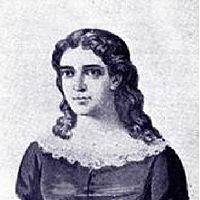
Dolores Veintimilla de Galindo (Quito, 12 de julio de 1829 - Cuenca, 23 de mayo de 1857) fue una poeta ecuatoriana del siglo XIX. Durante su corta vida fue la creadora de poemas de corte romántico que están cargados de elementos que asocian a la mujer con el papel de víctima asociados con sentimientos de dolor, tristeza, anhelo del pasado, amores frustrado y pesimismo. Fue influenciada por la formación de la subjetividad femenina de su época. Su poema “Quejas” está lleno de esos sentimientos que reflejan su estado anímico. El fracaso en su matrimonio con el médico colombiano Sixto Galindo, así como su pensamiento feminista adelantado a la época, marcarían la personalidad y los trabajos posteriores de Dolores. La persecución e incomprensión de la sociedad cuencana la llevó al suicidio.
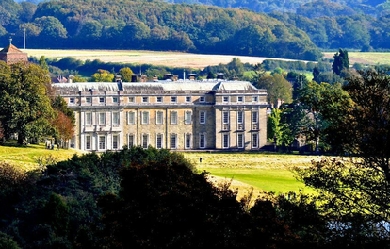
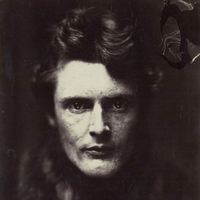
Wilfrid Scawen Blunt (17 August 1840– 10 September 1922) (sometimes spelled “Wilfred”) was an English poet and writer. He and his wife, Lady Anne Blunt travelled in the Middle East and were instrumental in preserving the Arabian horse bloodlines through their farm, the Crabbet Arabian Stud. He was best known for his poetry, which was published in a collected edition in 1914, but also wrote a number of political essays and polemics. Blunt is also known for his views against imperialism, viewed as relatively enlightened for his time. Early life Blunt was born at Petworth House in Sussex and served in the Diplomatic Service from 1858 to 1869. He was raised in the faith of his mother, a Catholic convert, and educated at Twyford School, Stonyhurst, and at St Mary’s College, Oscott. His most memorable line of poetry on the subject comes from Satan Absolved (1899), where the devil, answering a Kiplingesque remark by God, snaps back: ‘The white man’s burden, Lord, is the burden of his cash’ Here, Longford explains, 'Blunt stood Rudyard Kipling’s familiar concept on its head, arguing that the imperialists’ burden is not their moral responsibility for the colonised peoples, but their urge to make money out of them.' Personal life In 1869, Blunt married Lady Anne Noel, the daughter of the Earl of Lovelace and Ada Lovelace, and granddaughter of Lord Byron. Together the Blunts travelled through Spain, Algeria, Egypt, the Syrian Desert, and extensively in the Middle East and India. Based upon pure-blooded Arabian horses they obtained in Egypt and the Nejd, they co-founded Crabbet Arabian Stud, and later purchased a property near Cairo, named Sheykh Obeyd which housed their horse breeding operation in Egypt. In 1882, he championed the cause of Urabi Pasha, which led him to be banned from entering Egypt for four years. Blunt generally opposed British imperialism as a matter of philosophy, and his support for Irish causes led to his imprisonment in 1888. Wilfrid and Lady Anne’s only child to live to maturity was Judith Blunt-Lytton, 16th Baroness Wentworth, later known as Lady Wentworth. As an adult, she was married in Cairo but moved permanently to the Crabbet Park Estate in 1904. Wilfrid had a number of mistresses, among them a long term relationship with the courtesan Catherine “Skittles” Walters, and the Pre-Raphaelite beauty, Jane Morris. Eventually, he moved another mistress, Dorothy Carleton, into his home. This event triggered Lady Anne’s legal separation from him in 1906. At that time, Lady Anne signed a Deed of Partition drawn up by Wilfrid. Under its terms, unfavourable to Lady Anne, she kept the Crabbet Park property (where their daughter Judith lived) and half the horses, while Blunt took Caxtons Farm, also known as Newbuildings, and the rest of the stock. Always struggling with financial concerns and chemical dependency issues, Wilfrid sold off numerous horses to pay debts and constantly attempted to obtain additional assets. Lady Anne left the management of her properties to Judith, and spent many months of every year in Egypt at the Sheykh Obeyd estate, moving there permanently in 1915. Due primarily to the manoeuvering of Wilfrid in an attempt to disinherit Judith and obtain the entire Crabbet property for himself, Judith and her mother were estranged at the time of Lady Anne’s death in 1917. As a result, Lady Anne’s share of the Crabbet Stud passed to Judith’s daughters, under the oversight of an independent trustee. Blunt filed a lawsuit soon afterward. Ownership of the Arabian horses went back and forth between the estates of father and daughter in the following years. Blunt sold more horses to pay off debts and shot at least four in an attempt to spite his daughter, an action which required intervention of the trustee of the estate with a court injunction to prevent him from further “dissipating the assets” of the estate. The lawsuit was settled in favour of the granddaughters in 1920, and Judith bought their share from the trustee, combining it with her own assets and reuniting the stud. Father and daughter briefly reconciled shortly before Wilfrid Scawen Blunt’s death in 1922, but his promise to rewrite his will to restore Judith’s inheritance never materialised. Blunt was a friend of Winston Churchill, aiding him in his 1906 biography of his father, Randolph Churchill, whom Blunt had befriended years earlier in 1883 at a chess tournament. Work in Africa In the early 1880s, Britain was struggling with its Egyptian colony. Wilfrid Blunt was sent to notify Sir Edward Malet, the British agent, as to the Egyptian public opinion concerning the recent changes in government and development policies. In mid-December 1881, Blunt met with Ahmed ‘Urabi, known as Arabi or 'El Wahid’ (the Only One) due to his popularity with the Egyptians. Arabi was impressed with Blunt’s enthusiasm and appreciation of his culture. Their mutual respect created an environment in which Arabi could peacefully explain the reasoning behind a new patriotic movement, 'Egypt for the Egyptians’. Over the course of several days, Arabi explained the complicated background of the revolutionaries and their determination to rid themselves of the Turkish oligarchy. Wilfrid Blunt was vital in the relay of this information to the British empire although his anti-imperialist views were disregarded and England mounted further campaigns in the Sudan in 1885 and 1896–98. Egyptian Garden scandal In 1901, a pack of fox hounds was shipped over to Cairo to entertain the army officers, and subsequently a foxhunt took place in the desert near Cairo. The fox was chased into Blunt’s garden, and the hounds and hunt followed it. As well as a house and garden, the land contained the Blunt’s Sheykh Obeyd stud farm, housing a number of valuable Arabian horses. Blunt’s staff challenged the trespassers– who, though army officers, were not in uniform– and beat them when they refused to turn back. For this, the staff were accused of assault against army officers and imprisoned. Blunt made strenuous efforts to free his staff, much to the embarrassment of the British army officers and civil servants involved. Bibliography * Sonnets and Songs. By Proteus. John Murray, 1875 * Aubrey de Vere (ed.): Proteus and Amadeus: A Correspondence Kegan Paul, 1878 * The Love Sonnets of Proteus. Kegan Paul, 1881 * The Future of Islam Kegan Paul, Trench, London 1882 * Esther (1892) * Griselda Kegan Paul, Trench, Trübner, 1893 * The Quatrains of Youth (1898) * Satan Absolved: A Victorian Mystery. J. Lane, London 1899 * Seven Golden Odes of Pagan Arabia (1903) * Atrocities of Justice under the English Rule in Egypt. T. F. Unwin, London 1907. * Secret History of the English Occupation of Egypt Knopf, 1907 * India under Ripon; A Private Diary T. Fisher Unwin, London 1909. * Gordon at Khartoum. S. Swift, London 1911. * The Land War in Ireland. S. Swift, London 1912 * The Poetical Works. 2 Vols. . Macmillan, London 1914 * My Diaries. Secker, London 1919; 2 Vols. Knopf, New York 1921 References Wikipedia—https://en.wikipedia.org/wiki/Wilfrid_Scawen_Blunt
I have been a hopeless romantic since I was a young boy. I have always been drawn to relationships and the experience of love. The exhilaration and emotions that flood into and coarse through those that are in love is the most intoxicating feeling possible, at least in my opinion. As you read these poems, you are reading my story. I write about my thoughts, my feelings, and my experiences. Forgive me if my writings are not of your flavor as I never did read much poetry from others.
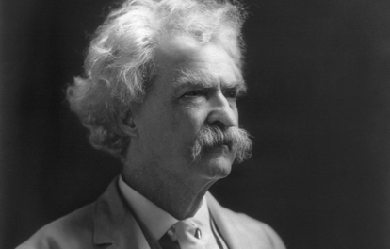

Samuel Langhorne Clemens (November 30, 1835– April 21, 1910), better known by his pen name Mark Twain, was an American writer, humorist, entrepreneur, publisher, and lecturer. Among his novels are The Adventures of Tom Sawyer (1876) and its sequel, the Adventures of Huckleberry Finn (1885), the latter often called “The Great American Novel”.
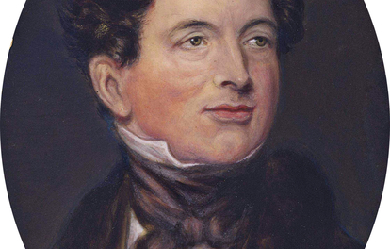
.jpeg)
Thomas Moore (28 May 1779 – 25 February 1852), also known as Tom Moore, was an Irish writer, poet, and lyricist celebrated for his Irish Melodies. His setting of English-language verse to old Irish tunes marked the transition in popular Irish culture from Irish to English. Politically, Moore was recognised in England as a press, or "squib", writer for the aristocratic Whigs; in Ireland he was accounted a Catholic patriot.
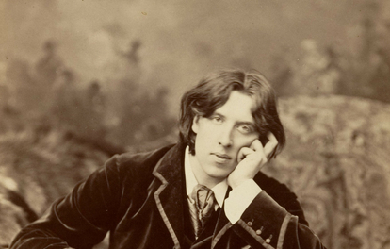
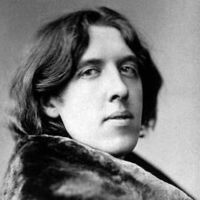
Oscar Fingal O'Flahertie Wills Wilde (16 October 1854 – 30 November 1900) was an Irish writer and poet. After writing in different forms throughout the 1880s, he became one of London's most popular playwrights in the early 1890s. Today he is remembered for his epigrams, plays and the circumstances of his imprisonment, followed by his early death. At the turn of the 1890s, he refined his ideas about the supremacy of art in a series of dialogues and essays, and incorporated themes of decadence, duplicity, and beauty into his only novel, The Picture of Dorian Gray (1890). The opportunity to construct aesthetic details precisely, and combine them with larger social themes, drew Wilde to write drama. He wrote Salome (1891) in French in Paris but it was refused a licence. Unperturbed, Wilde produced four society comedies in the early 1890s, which made him one of the most successful playwrights of late Victorian London.
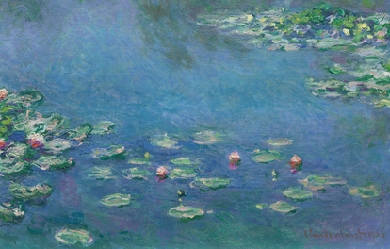
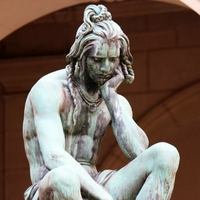
“L'amour n'est pas un feu qu'on renferme dans une âme : Tout nous trahit, la voix, le silence, les yeux; Et les feux mal couverts n'en éclatent que mieux.”Racine Love is not a fire that one encloses in a soul: Everything betrays us, the voice, the silence, the eyes; And poorly covered fires only break out better. ” Racine
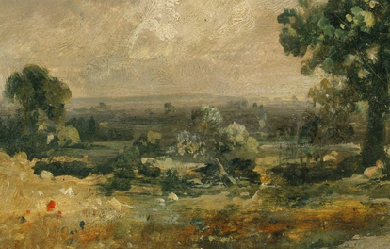
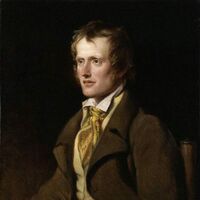
John Clare (13 July 1793 – 20 May 1864) was an English poet, the son of a farm labourer, who came to be known for his celebratory representations of the English countryside and his lamentation of its disruption. His poetry underwent a major re-evaluation in the late 20th century and he is often now considered to be among the most important 19th-century poets. His biographer Jonathan Bate states that Clare was "the greatest labouring-class poet that England has ever produced. No one has ever written more powerfully of nature, of a rural childhood, and of the alienated and unstable self”. Early life Clare was born in Helpston, six miles to the north of the city of Peterborough. In his life time, the village was in the Soke of Peterborough in Northamptonshire and his memorial calls him "The Northamptonshire Peasant Poet". Helpston now lies in the Peterborough unitary authority of Cambridgeshire. He became an agricultural labourer while still a child; however, he attended school in Glinton church until he was twelve. In his early adult years, Clare became a pot-boy in the Blue Bell public house and fell in love with Mary Joyce; but her father, a prosperous farmer, forbade her to meet him. Subsequently he was a gardener at Burghley House. He enlisted in the militia, tried camp life with Gypsies, and worked in Pickworth as a lime burner in 1817. In the following year he was obliged to accept parish relief. Malnutrition stemming from childhood may be the main culprit behind his 5-foot stature and may have contributed to his poor physical health in later life. Early poems Clare had bought a copy of Thomson's Seasons and began to write poems and sonnets. In an attempt to hold off his parents' eviction from their home, Clare offered his poems to a local bookseller named Edward Drury. Drury sent Clare's poetry to his cousin John Taylor of the publishing firm of Taylor & Hessey, who had published the work of John Keats. Taylor published Clare's Poems Descriptive of Rural Life and Scenery in 1820. This book was highly praised, and in the next year his Village Minstrel and other Poems were published. Midlife He had married Martha ("Patty") Turner in 1820. An annuity of 15 guineas from the Marquess of Exeter, in whose service he had been, was supplemented by subscription, so that Clare became possessed of £45 annually, a sum far beyond what he had ever earned. Soon, however, his income became insufficient, and in 1823 he was nearly penniless. The Shepherd's Calendar (1827) met with little success, which was not increased by his hawking it himself. As he worked again in the fields his health temporarily improved; but he soon became seriously ill. Earl FitzWilliam presented him with a new cottage and a piece of ground, but Clare could not settle in his new home. Clare was constantly torn between the two worlds of literary London and his often illiterate neighbours; between the need to write poetry and the need for money to feed and clothe his children. His health began to suffer, and he had bouts of severe depression, which became worse after his sixth child was born in 1830 and as his poetry sold less well. In 1832, his friends and his London patrons clubbed together to move the family to a larger cottage with a smallholding in the village of Northborough, not far from Helpston. However, he felt only more alienated. His last work, the Rural Muse (1835), was noticed favourably by Christopher North and other reviewers, but this was not enough to support his wife and seven children. Clare's mental health began to worsen. As his alcohol consumption steadily increased along with his dissatisfaction with his own identity, Clare's behaviour became more erratic. A notable instance of this behaviour was demonstrated in his interruption of a performance of The Merchant of Venice, in which Clare verbally assaulted Shylock. He was becoming a burden to Patty and his family, and in July 1837, on the recommendation of his publishing friend, John Taylor, Clare went of his own volition (accompanied by a friend of Taylor's) to Dr Matthew Allen's private asylum High Beach near Loughton, in Epping Forest. Taylor had assured Clare that he would receive the best medical care. Later life and death During his first few asylum years in Essex (1837–1841), Clare re-wrote famous poems and sonnets by Lord Byron. His own version of Child Harold became a lament for past lost love, and Don Juan, A Poem became an acerbic, misogynistic, sexualised rant redolent of an aging Regency dandy. Clare also took credit for Shakespeare's plays, claiming to be the Renaissance genius himself. "I'm John Clare now," the poet claimed to a newspaper editor, "I was Byron and Shakespeare formerly." In 1841, Clare left the asylum in Essex, to walk home, believing that he was to meet his first love Mary Joyce; Clare was convinced that he was married with children to her and Martha as well. He did not believe her family when they told him she had died accidentally three years earlier in a house fire. He remained free, mostly at home in Northborough, for the five months following, but eventually Patty called the doctors in. Between Christmas and New Year in 1841, Clare was committed to the Northampton General Lunatic Asylum (now St Andrew's Hospital). Upon Clare's arrival at the asylum, the accompanying doctor, Fenwick Skrimshire, who had treated Clare since 1820, completed the admission papers. To the enquiry "Was the insanity preceded by any severe or long-continued mental emotion or exertion?", Dr Skrimshire entered: "After years of poetical prosing." He remained here for the rest of his life under the humane regime of Dr Thomas Octavius Prichard, encouraged and helped to write. Here he wrote possibly his most famous poem, I Am. He died on 20 May 1864, in his 71st year. His remains were returned to Helpston for burial in St Botolph’s churchyard. Today, children at the John Clare School, Helpston's primary, parade through the village and place their 'midsummer cushions' around Clare's gravestone (which has the inscriptions "To the Memory of John Clare The Northamptonshire Peasant Poet" and "A Poet is Born not Made") on his birthday, in honour of their most famous resident. The thatched cottage where he was born was bought by the John Clare Education & Environment Trust in 2005 and is restoring the cottage to its 18th century state. Poetry In his time, Clare was commonly known as "the Northamptonshire Peasant Poet". Since his formal education was brief, Clare resisted the use of the increasingly standardised English grammar and orthography in his poetry and prose. Many of his poems would come to incorporate terms used locally in his Northamptonshire dialect, such as 'pooty' (snail), 'lady-cow' (ladybird), 'crizzle' (to crisp) and 'throstle' (song thrush). In his early life he struggled to find a place for his poetry in the changing literary fashions of the day. He also felt that he did not belong with other peasants. Clare once wrote "I live here among the ignorant like a lost man in fact like one whom the rest seemes careless of having anything to do with—they hardly dare talk in my company for fear I should mention them in my writings and I find more pleasure in wandering the fields than in musing among my silent neighbours who are insensible to everything but toiling and talking of it and that to no purpose.” It is common to see an absence of punctuation in many of Clare's original writings, although many publishers felt the need to remedy this practice in the majority of his work. Clare argued with his editors about how it should be presented to the public. Clare grew up during a period of massive changes in both town and countryside as the Industrial Revolution swept Europe. Many former agricultural workers, including children, moved away from the countryside to over-crowded cities, following factory work. The Agricultural Revolution saw pastures ploughed up, trees and hedges uprooted, the fens drained and the common land enclosed. This destruction of a centuries-old way of life distressed Clare deeply. His political and social views were predominantly conservative ("I am as far as my politics reaches 'King and Country'—no Innovations in Religion and Government say I."). He refused even to complain about the subordinate position to which English society relegated him, swearing that "with the old dish that was served to my forefathers I am content." His early work delights both in nature and the cycle of the rural year. Poems such as Winter Evening, Haymaking and Wood Pictures in Summer celebrate the beauty of the world and the certainties of rural life, where animals must be fed and crops harvested. Poems such as Little Trotty Wagtail show his sharp observation of wildlife, though The Badger shows his lack of sentiment about the place of animals in the countryside. At this time, he often used poetic forms such as the sonnet and the rhyming couplet. His later poetry tends to be more meditative and use forms similar to the folks songs and ballads of his youth. An example of this is Evening. His knowledge of the natural world went far beyond that of the major Romantic poets. However, poems such as I Am show a metaphysical depth on a par with his contemporary poets and many of his pre-asylum poems deal with intricate play on the nature of linguistics. His 'bird's nest poems', it can be argued, illustrate the self-awareness, and obsession with the creative process that captivated the romantics. Clare was the most influential poet, aside from Wordsworth to practice in an older style. Revival of interest in the twentieth century Clare was relatively forgotten during the later nineteenth century, but interest in his work was revived by Arthur Symons in 1908, Edmund Blunden in 1920 and John and Anne Tibble in their ground-breaking 1935 2-volume edition. Benjamin Britten set some of 'May' from A Shepherd's Calendar in his Spring Symphony of 1948, and included a setting of The Evening Primrose in his Five Flower Songs Copyright to much of his work has been claimed since 1965 by the editor of the Complete Poetry (OUP, 9 vols., 1984–2003), Professor Eric Robinson though these claims were contested. Recent publishers have refused to acknowledge the claim (especially in recent editions from Faber and Carcanet) and it seems the copyright is now defunct. The John Clare Trust purchased Clare Cottage in Helpston in 2005, preserving it for future generations. In May 2007 the Trust gained £1.m of funding from the Heritage Lottery Fund and commissioned Jefferson Sheard Architects to create the new landscape design and Visitor Centre, including a cafe, shop and exhibition space. The Cottage has been restored using traditional building methods and opened to the public. The largest collection of original Clare manuscripts are housed at Peterborough Museum, where they are available to view by appointment. Since 1993, the John Clare Society of North America has organised an annual session of scholarly papers concerning John Clare at the annual Convention of the Modern Language Association of America. Poetry collections by Clare (chronological) * Poems Descriptive of Rural Life and Scenery. London, 1820. * The Village Minstrel, and Other Poems. London, 1821. * The Shepherd's Calendar with Village Stories and Other Poems. London, 1827 * The Rural Muse. London, 1835. * Sonnet. London 1841 * First Love * Snow Storm. * The Firetail. * The Badger – Time unknown References Wikipedia - http://en.wikipedia.org/wiki/John_Clare

I am from Cecina in Tuscany, Italy. I moved to Davis, California, in 2009. My life experience in Davis has inspired many of my recent poems. I write my poetry only in Italian language. During the last few summer seasons I have been actively sharing my poems in Tuscany where I participate frequently in cultural and poetry events. As a child, after recognizing that I had a gift for poetry, my parents submitted my work in a variety of different contests. In 1989 I won my first prize. Starting in 1998, I published my poetry in newspapers and magazines, mostly in the area of Tuscany where I was raised. My first book, "Sono un Angelo Dimenticato," was published in 1998 from Ed.La Palma; in 2008 a second book, called "Nessuna Musa di Cristallo” was also published. My poem “Sto per lasciare tutto “(English version: “I’m about to leave everything”) was published in USA, for the Davis Poetry Book 2011. My books: "Extreme Fishing" 2011, "I colori dentro" 2016, both available on Amazon. "Sospesa fra due mondi" was published in Italy by Mds Editore, 2019. In 2020 I moved back to my country and I live in Turin where I work as a teacher.
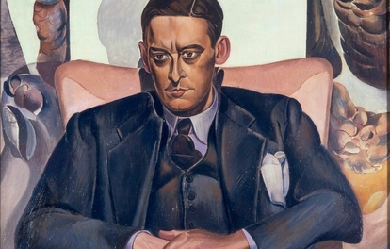
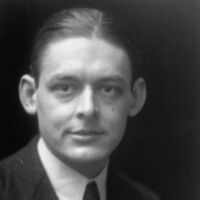
Thomas Stearns Eliot OM (26 September 1888– 4 January 1965) was a British essayist, publisher, playwright, literary and social critic, and “one of the twentieth century’s major poets”. He moved from his native United States to England in 1914 at the age of 25, settling, working, and marrying there. He was eventually naturalised as a British subject in 1927 at the age of 39, renouncing his American citizenship. Eliot attracted widespread attention for his poem “The Love Song of J. Alfred Prufrock” (1915), which was seen as a masterpiece of the Modernist movement. It was followed by some of the best-known poems in the English language, including The Waste Land (1922), “The Hollow Men” (1925), “Ash Wednesday” (1930), and Four Quartets (1943). He was also known for his seven plays, particularly Murder in the Cathedral (1935). He was awarded the Nobel Prize in Literature in 1948, “for his outstanding, pioneer contribution to present-day poetry”.
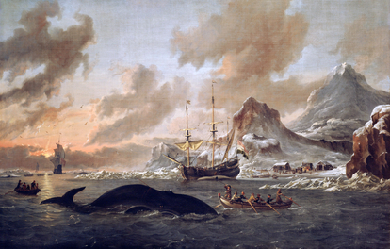
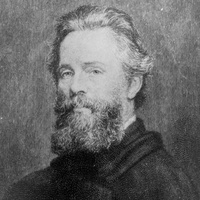
Herman Melville (August 1, 1819– September 28, 1891) was an American novelist, short story writer, and poet of the American Renaissance period best known for Typee (1846), a romantic account of his experiences in Polynesian life, and his whaling novel Moby-Dick (1851). His work was almost forgotten during his last thirty years. His writing draws on his experience at sea as a common sailor, exploration of literature and philosophy, and engagement in the contradictions of American society in a period of rapid change. He developed a complex, baroque style: the vocabulary is rich and original, a strong sense of rhythm infuses the elaborate sentences, the imagery is often mystical or ironic, and the abundance of allusion extends to Scripture, myth, philosophy, literature, and the visual arts.






